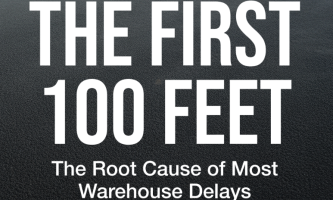Major 5 Differences Between Mass-Market Paperback Vs. Trade Paperback

Mostly, if you search for mass-market paperback on Amazon, there is a chance that you know these two terms: mass-market paperback and paperback alone. However, on Amazon, both these types of books are also enlisted separately. So, you must know that these two are different. Let’s find out the difference between Mass-Market Paperback vs. Paperback.
Usually, these books look different, and sometimes they also have other covers. You can buy either of them as you deem fit for your budget. But, there is less of a guarantee for one of them. So, let’s find out which one is in the mass-market paperback vs. paperback battle.
What is Mass Market Paperback on Amazon?

If you want to know the winner of mass-market paperback vs. paperback, it’s essential to know about each of them first.
Mass-market paperbacks are cheap in quality, and they are a smaller edition of the actual book. They don’t have any illustrations, they use cheap binding, and they can become discolored over a specific period. Sometimes, they even come in pocket editions so that you can fit them in your pocket as you travel.
Mass-market paperbacks are primarily available in shops that do not mainly book shops. For example, you can get them at a pharmacy store, airport, gift shop, supermarket, etc. They are priced far less than the original book, which is why people are often attracted to purchase them. But, the poor quality of paper and binding makes readers donate the book to a charity or discard it as soon as they are done reading it.
There is a particular fixation on the genre of the mass-market paperback books. You will mostly find books in the History, romance, thriller, and mystery genres. Once you return these books, they cannot be resold. So, the distributors simply strip the cover and recycle the rest of the book.
Important Characteristics of Mass Market Paperbacks on Amazon

You now know what is mass market paperback on amazon. But you must know why they are distinct from the trade paperbacks and hardcover books.
Difference in Barcode
If you search for what a mass-market paperback on Amazon is, it will suggest some of the highest-selling mass-market paperbacks. Other than the look and feel, how else are mass-market paperbacks different?
Well, all mass market paperbacks on Amazon have the UPC barcode. It is a universal product code. This code is the same for all the units published. However, it is not the same for trade paperbacks. The barcodes of trade paperbacks and the hardcovers are Bookland EAN. EAN stands for European Article Numbers.
Difference in Genre
There are no static guidelines for a specific genre of books that must be published in the mass market format. However, if you search for a mass-market paperback on Amazon, it will suggest books of some common genre. The reason behind it is simple. Mass-market paperback books of some common genres are published more. These genres are:
- Young adult fiction stories
- Mysteries
- Popular history
- Thrillers
- Crime
Authors with the most bestselling books, like James Patterson, also have the highest mass-market paperbacks.
Books with Strippable Covers
The sellers can strip off the covers of the unsold mass paperbacks. The publishers take back these covers against a statutory resell value.
Then, the sellers can recycle the rest of the book.
Additional Content
In most cases, the preface and epilogues are changed in mass-market paperbacks.
The original preface and epilogues are changed for a reason. It helps to maintain the originality of the trade paperbacks. Other than illustrations and covers, there must be something else for which I will buy its trade version.
What Is A Trade Paper Back?
It is an eternal debate of which one is better in the mass-market paperback vs. paperback fight. We have already found out what a mass-market paperback is, so let’s find out what a paperback is.
Paperbacks are the softcover edition of the previous hardcover edition of the original book. They indeed cost more than the mass-market paperbacks, but they also cost less than the hardcovers. This is because the illustrations, pagination, binding quality, and page numbers are the same in paperbacks and hardcovers. So, the price only varies for the hardness and the softness of the cover.
People often release their books in a paperback format so that they can acquire reviews from critics. Once the necessary adjustments are made, the book is finally released in the hardcover format. Unfortunately, as the mass-market paperbacks, the distributors cannot strip the front covers of the paperbacks too.
You can find paperbacks at traditional book shops, and even book dealers and book distributors can also help you get these. But, again, there is no fixation on the book’s genre here, so you can get paperbacks in any possible categories.
May You Like: How To Build An Ecommerce Website To Boost Your Business
What Are Some Differences Between Mass-Market Paperback and Trade Paperback?

If we want to know which one is better, the mass-market paperback vs. paperback, we have to find some differences between them. Of course, there are plenty of differences between these two types of books, but some of the most prominent ones are mentioned below.
1: Difference In Price
The significant difference between a mass-market paperback and a paperback is their price difference. This is because lower-quality papers are used for printing mass-market paperbacks. These kinds of books even discolor within a specific period. So, they are usually cheaper in terms of price.
However, paperback books are usually better in terms of quality. When you search for a mass-market paperback on Amazon, you don’t get suggestions for higher-quality books. In addition, these books won’t discolor over a certain period, so you will find them the same looking no matter how many years after you reopen them. That’s why paperbacks are more expensive than mass-market paperbacks.
2: Difference In Pagination
Pagination is a significant factor of difference in the debate of mass-market paperback vs. paperback. Mass-market paperbacks use a smaller size for pages, so there are usually more pages in these books than in the paperback edition. When the mass-market paperbacks come in the pocket edition, the page numbers are even larger, and the font quality is inferior on those books, too.
Nevertheless, the pagination in paperbacks is precisely the same as the hardcover editions. In addition, the page quality is the same as the hardcover editions, and it even includes all the illustrations. Hence, the number of pages is lesser in paperbacks than in mass-market paperbacks.
3: Difference In Releasing Time
First comes the hardcovers, and then the paperbacks are released. It is the usual trend that authors and publishers follow. But, sometimes, the paperbacks are released first because they are sent to critics to review the book. Once they make all the necessary corrections based on the review, the final hardcover edition comes into the market.
On the other hand, the mass-market paperbacks appear very late in the market. This is because they are released after the hardcover editions and the softcover paperback editions. But, this is not a rule that everyone must follow. Some new authors first go for mass-market paperback options because they want to appeal to a larger audience. Then, if the book is loved by all, they go for the paperbacks.
4: Difference In Return And Refund Policy
We are telling a buyer to return one of these types of books between the mass-market paperback vs. paperback battle. No, they can’t. However, the booksellers can return the mass-market paperbacks to the publishers. When you search for a mass-market paperback on Amazon, you get the best sellers as a result. If you buy any of the books, you can easily resell them. You only have to strip the cover, and they can apply for store credit or a refund after returning it.
On the contrary, the paperback return policy doesn’t work like that. If the bookseller wants to return a paperback, he has to replace the whole book, not just the cover. The covers of paperbacks are not strippable, too, so you can’t ask for a refund unless and until you return the whole book.
5: Difference In Genre
The fight between mass-market paperbacks and paperbacks will remain incomplete if we don’t discuss the genre of these two types of books. In mass-market paperbacks, the usual fiction books like romance, thriller, and mystery are available. On the other hand, if you are looking for a religious book or a political book, those won’t be available in the mass-market paperback format.
Nonetheless, in the paperback format, there is no rigidity in the genre. Thus, no book is only available in hardcover and not in softcover paperback editions. Instead, you can access books of any possible genre in a paperback format more than with hardcover and mass-market paperback combined.
Sum It Up
If you are an avid reader, you should buy paperback rather than mass-market paperbacks. The page quality, originality, binding, illustration-everything is better in the paperbacks. The price is also not very high like the hardcovers. So, we declare paperback as the winner in the mass-market paperback vs. paperback battle.
Frequently Asked Questions :
Ans: If you search what is mass market paperback on amazon, you will get suggestions of some bestsellers. However, the physical look and feel of the mass market paperbacks are different. The trade paperbacks are made with better quality paper. The content in those books is also better. Rather, you will find the author’s own content in trade paperbacks only.ntially, it all depends upon how well you take care of the book.
Ans: The pages of the mass market paperbacks are smaller. Most of them have a 4″x7″ page size. However, you will see that trade paper backs and hardcovers mostly have 6″x9″ page size. As a result, the number of pages in mass market paperbacks is more.
For example, Game of Thrones mass market version has 831 pages. However, the regular version has 704 pages.
Ans: The mass market paperback books on Amazon has more pages. As a result, the cost of making a mass market paperback is more than the trade paperback. Also, the mass market version is more popular. Publishers earn more by circulating these books in larger volumes.
Read More:













